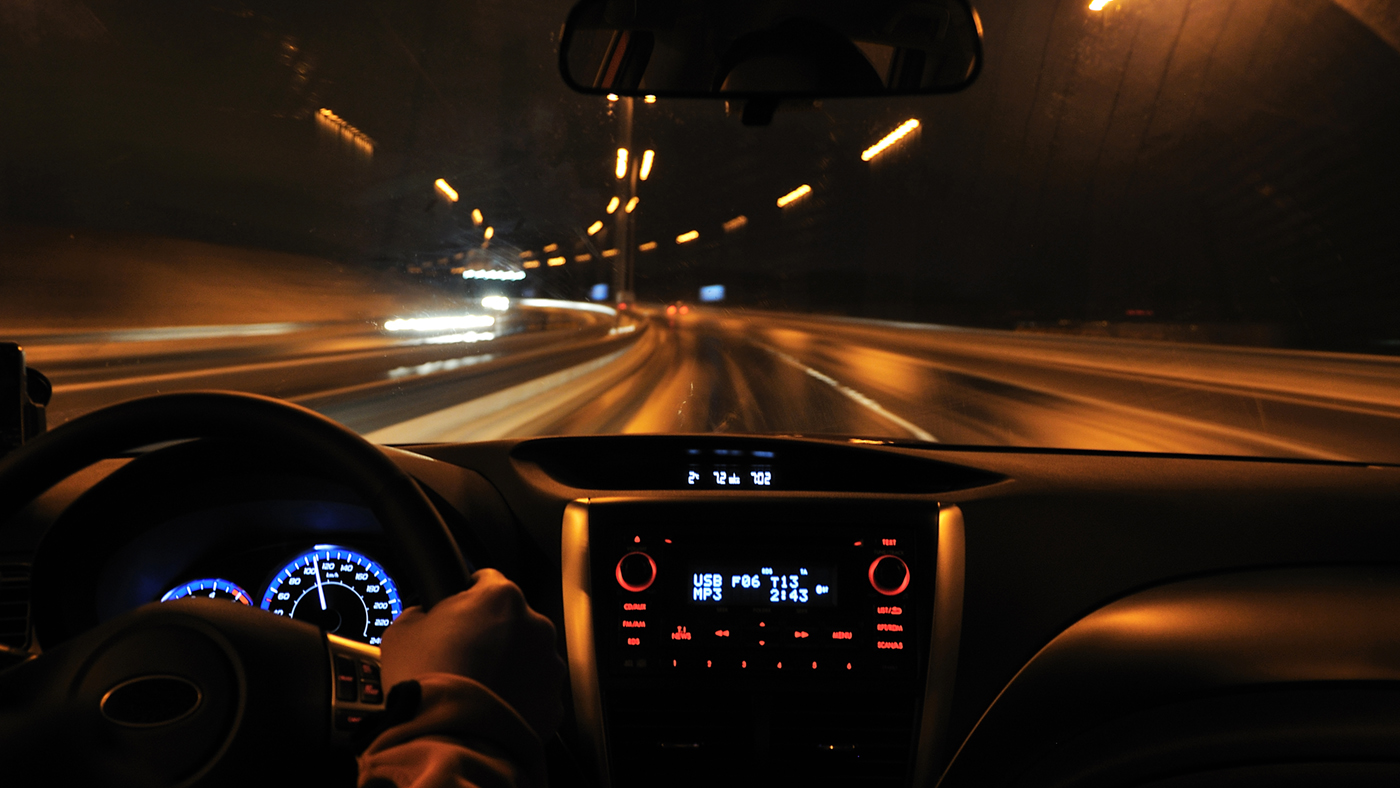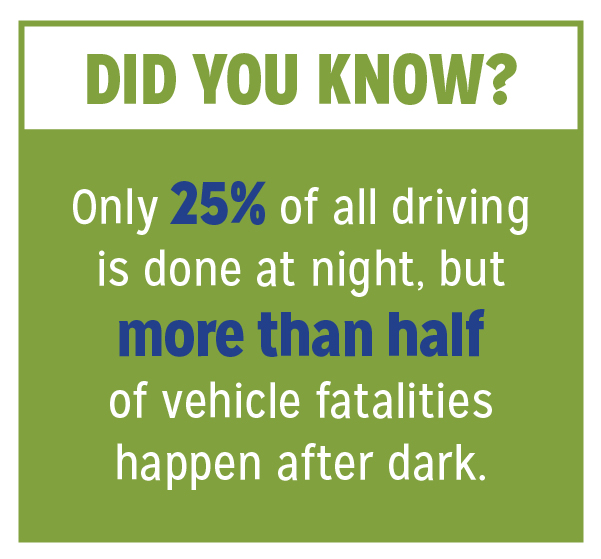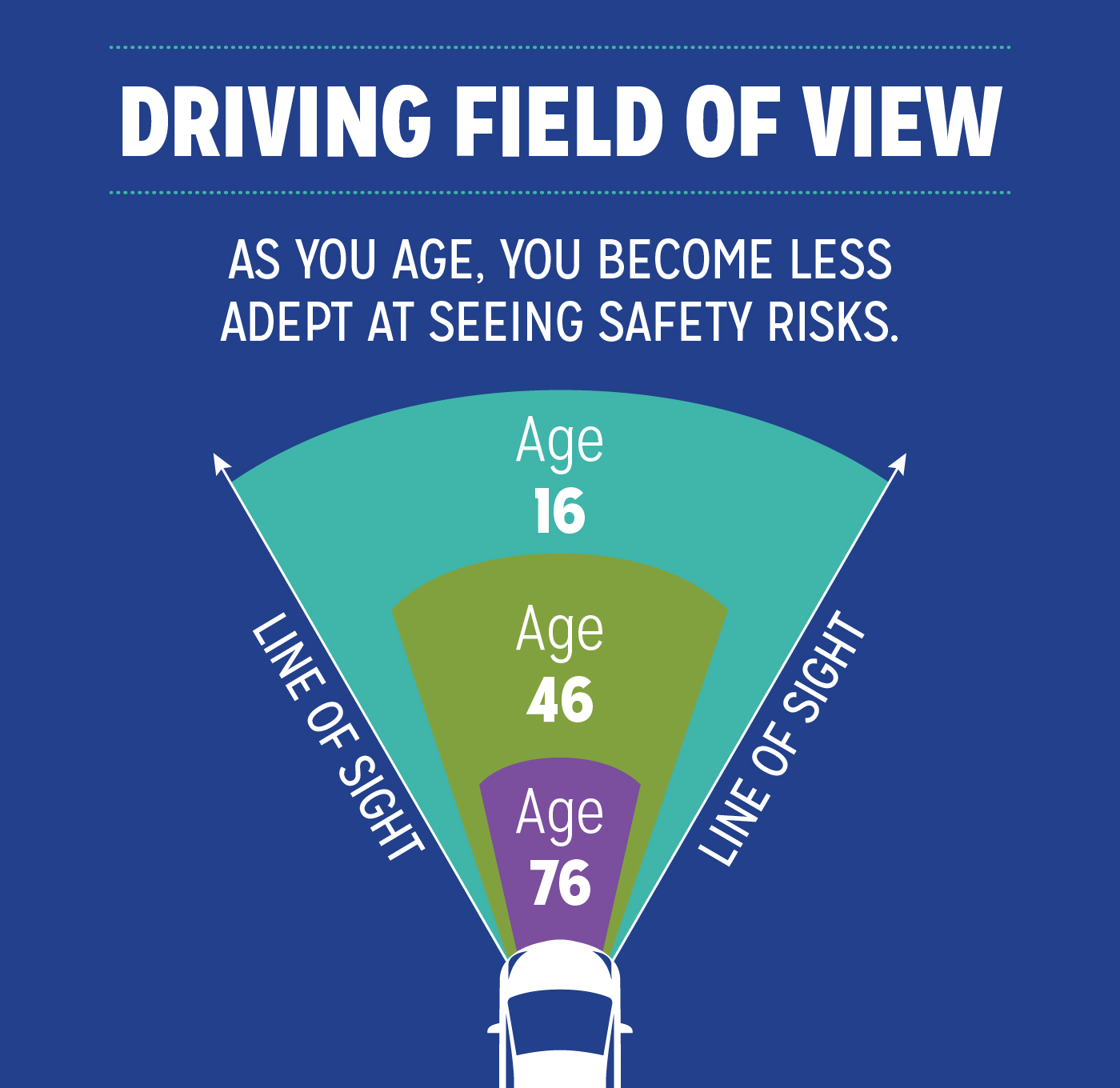Take Care With AAA
Find tips, tools and resources to help everyone in your family drive safely.
These tips can keep you safer on the road when the sun goes down.
 iStock
iStock
Human eyes don’t see well in the dark. Without light, our depth perception, color recognition, ability to see contrast, and peripheral vision can be compromised. All of which makes driving at night more dangerous than day driving. Keeping these do’s and don’ts in mind can help you stay safer behind the wheel after dark.
 Source: AAA research
Source: AAA researchAt night, your field of vision is limited to the area illuminated by your headlights. Even with your high-beam headlights on, that may only be about 500 feet (and only about 250 feet with low beams). To give yourself plenty of stopping time, slow down and increase the typical distance between you and the car you’re following.
The glow from your car’s instrument panel and infotainment system can be distracting. The lights can also cause reflections on the windshield that make it tougher for your eyes to adjust to the darkness outside the car. Using the dimmer switch to tone these down can help.
 Source: National Safety Council
Source: National Safety CouncilAfter driving on a sunny day, it takes time for your eyes to adjust to the low light when darkness falls. Wear a good pair of sunglasses when driving on bright days and take them off as soon as the sun goes down. If you wear prescription glasses, choose a pair with anti-reflective lenses to cut down on the amount of light reflecting inside your specs. (Don’t forget: AAA Members save up to 50% at LensCrafters!)
Driving at night can reveal streaks in your windshield that weren’t visible in the daylight. Be sure it’s clean by wiping the inside of the glass with a microfiber cloth and glass cleaner. And never touch the inside of the glass with your bare hands; the oil from your skin can leave smears and smudges.
Even in new cars, headlights can sometimes be uneven or pointed too low. You can adjust them yourself using instructions in your owner’s manual or take your car to your local AAA Approved Auto Repair facility for help. If you have an older car with plastic lens covers that have yellowed, use a polish kit to clear off the residue (AAA Members save 10% and earn reward points on most auto parts and accessories at NAPA).
 Source: AAA research
Source: AAA researchAs you get older, your field of vision shrinks. Your eyes at age 60 need three times as much light to see as they did at age 20, because over time pupils get smaller and don’t dilate as well. That can make driving at night even tougher. To compensate, an older driver should scan farther down the road and be certain to move their head, not just their eyes, to make up for reduced peripheral vision
The American Optometric Association also offers this advice to senior drivers: